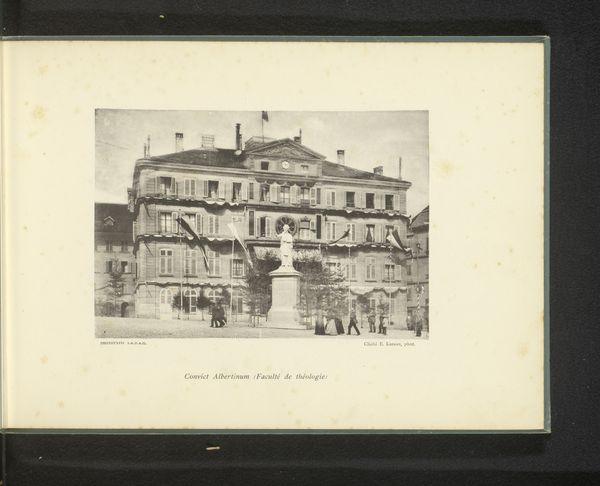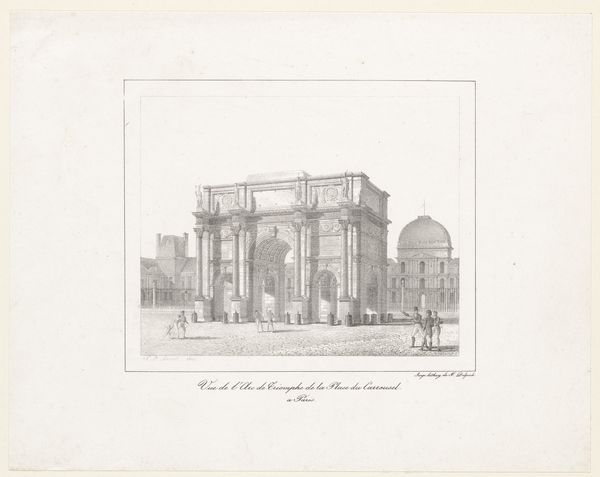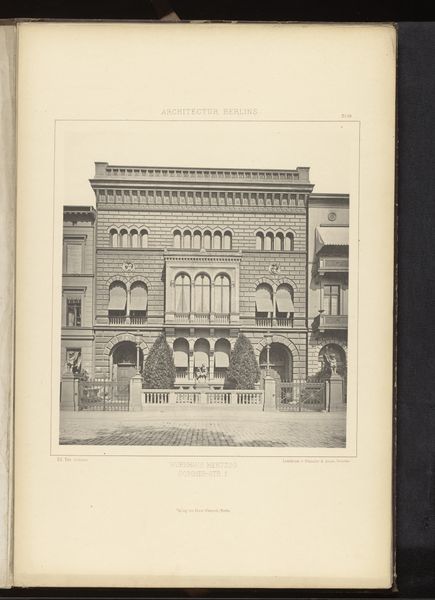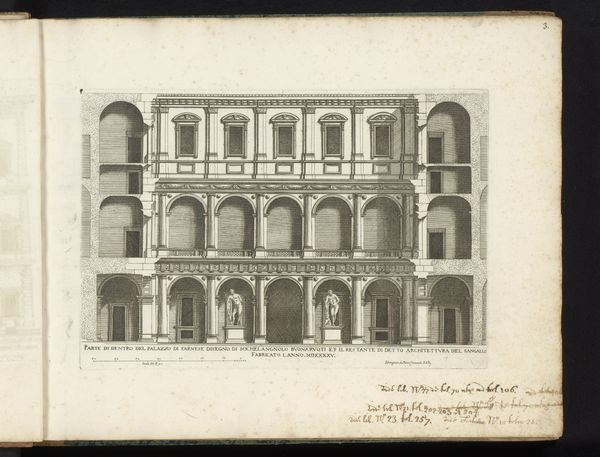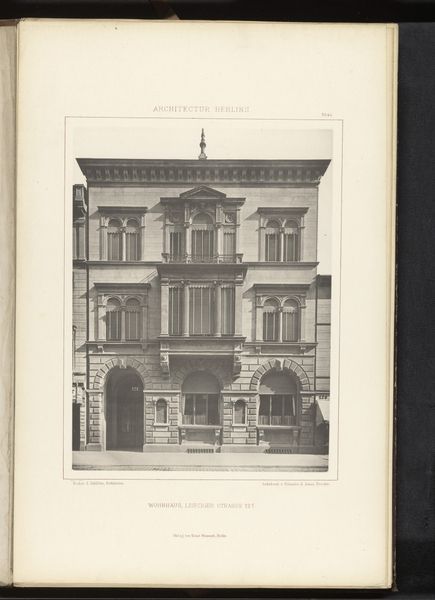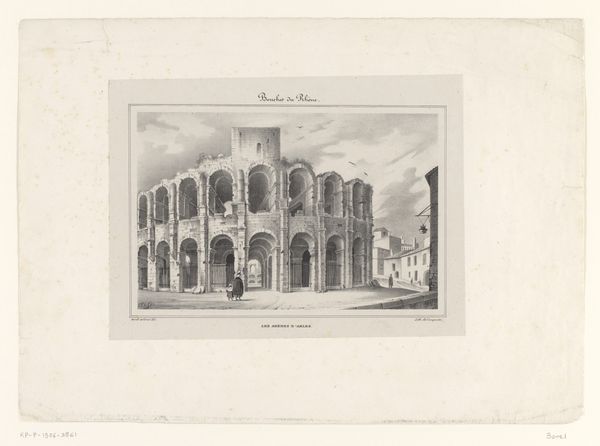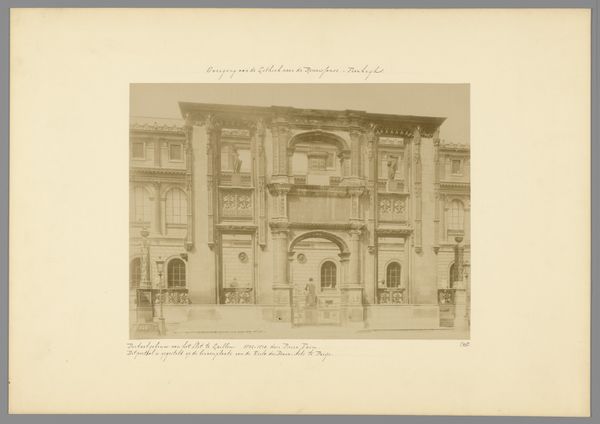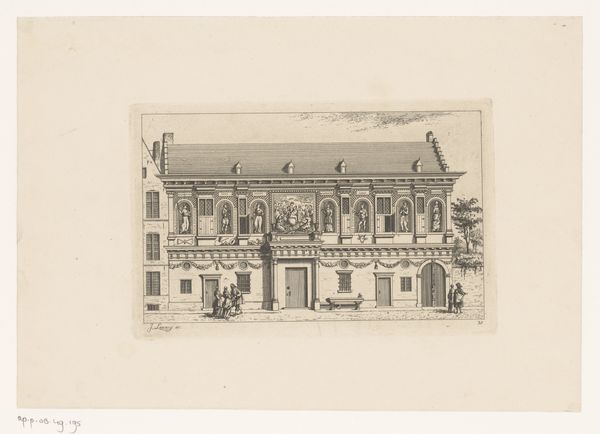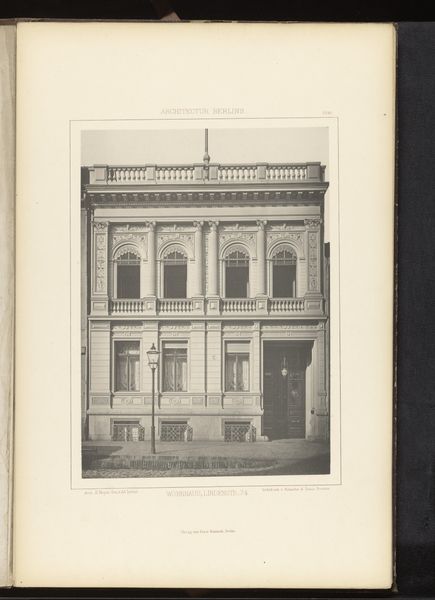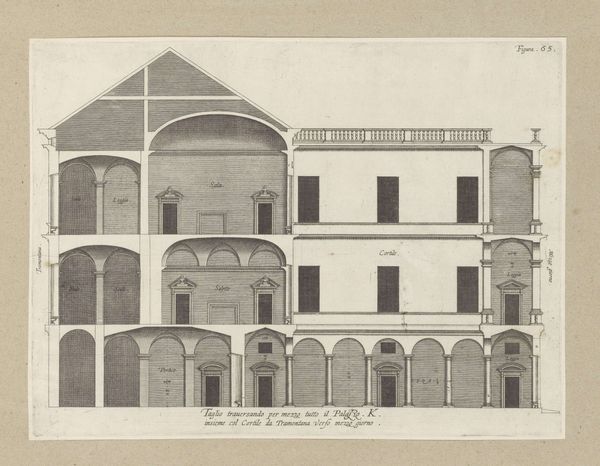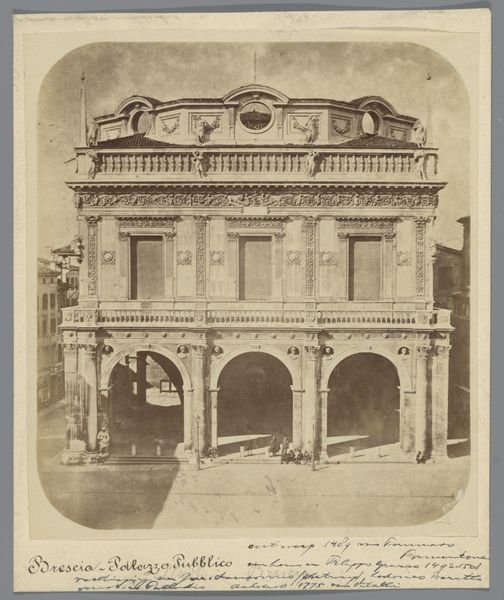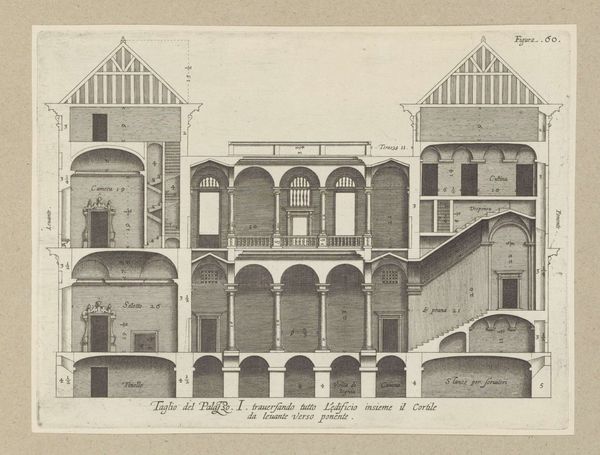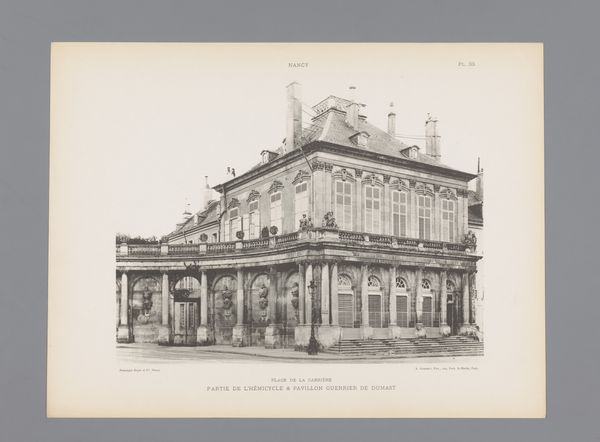
drawing, print, sculpture, engraving, architecture
#
drawing
# print
#
sculpture
#
cityscape
#
engraving
#
architecture
Dimensions: height 170 mm, width 205 mm
Copyright: Rijks Museum: Open Domain
Curator: The facade depicted here belonged to the Château de Gaillon in Paris. This engraving, made before 1841 by Johann Hürlimann, offers a glimpse into the architectural and social landscape of the era. Editor: It's remarkable, isn't it? The precision in the architectural details contrasted against the softer lines of the figures at the base immediately draws my attention. There's a formality here, almost a theatrical stage. Curator: Indeed. The Château de Gaillon held significance beyond its physical structure. Its reimagining through prints speaks to the public's fascination with aristocratic spaces, while also potentially solidifying class structures through their visual documentation and dissemination. Consider who owned these prints, and what this implied in the broader social milieu. Editor: Precisely. And those figures, rendered on such a small scale in relation to the architecture, speaks to an asymmetrical power dynamic. Are they inhabitants, or tourists; beneficiaries, or witnesses, of a crumbling nobility? This moment captured on the cusp of revolution perhaps? Curator: That reading certainly aligns with a cultural studies approach, noting the societal shifts underway and represented through symbolic placement of individuals within these grand constructs. The château, of course, experienced its own evolution – dismantled, repurposed. The engraving provides context for later demolition practices aimed at disrupting the aristocratic imagery itself. Editor: Which brings to mind: who gets to represent this narrative? Was Hürlimann’s choice of subject and medium neutral? Or did it carry the weight of his own social perspective or that of the commission and target audience for the work? Curator: These questions force us to analyze how the print may reinforce certain perceptions while challenging others depending on the moment it gets consumed by different socio-economic groups. Consider who gets access and gets excluded when these objects enter or are withheld from the public realm. Editor: An excellent reminder. Reflecting on this engraving highlights the way architectural documentation itself can operate as both historical record and powerful form of social commentary. Curator: Absolutely. Hürlimann's work reminds us that these structures were always more than stone and sculpture – they were also carriers of identity and instruments of cultural politics.
Comments
No comments
Be the first to comment and join the conversation on the ultimate creative platform.
